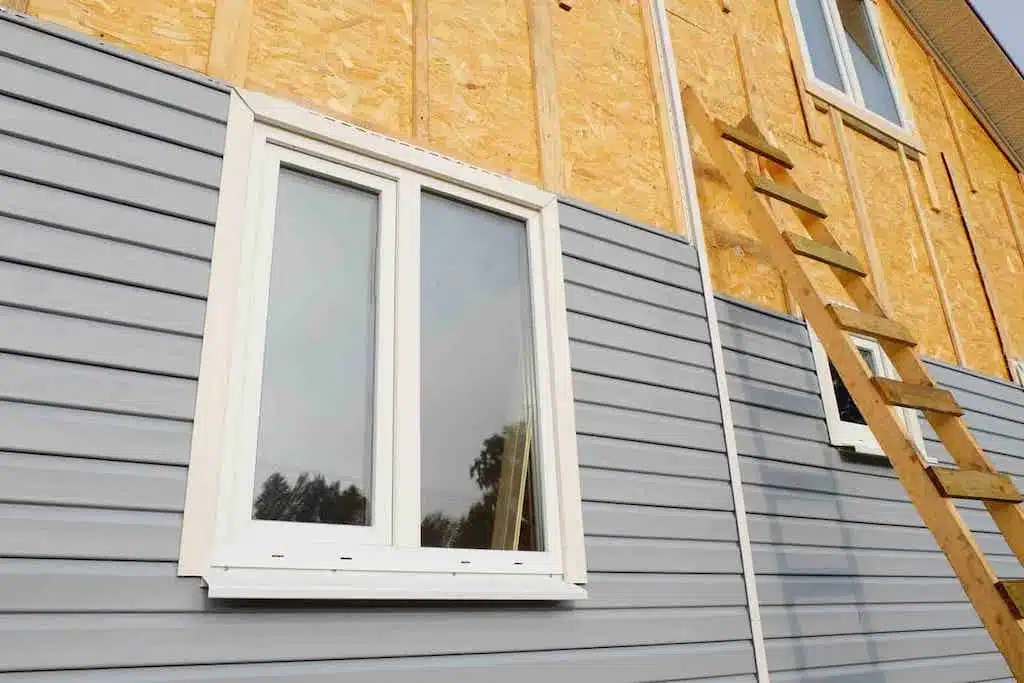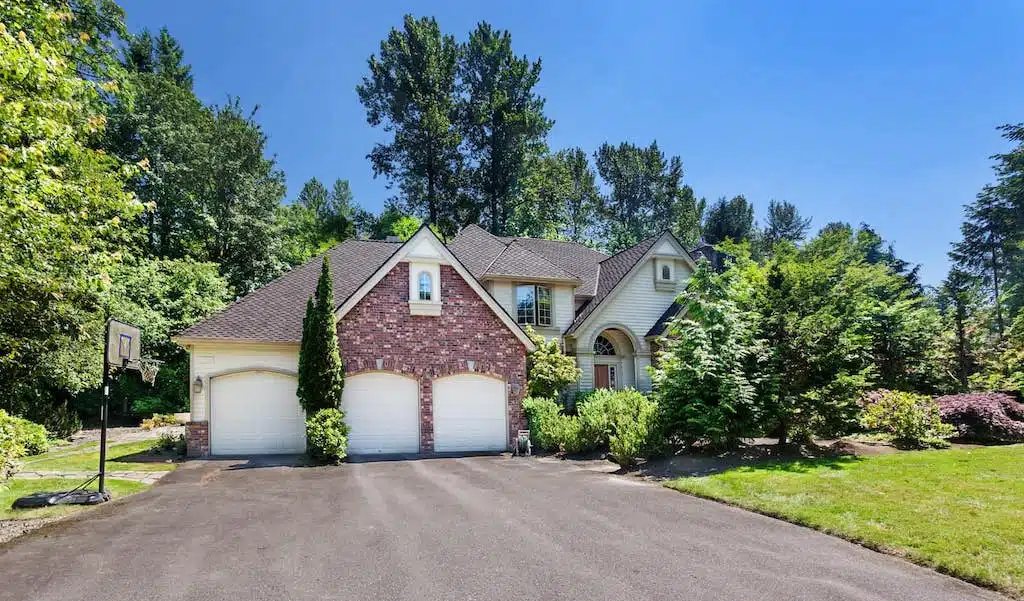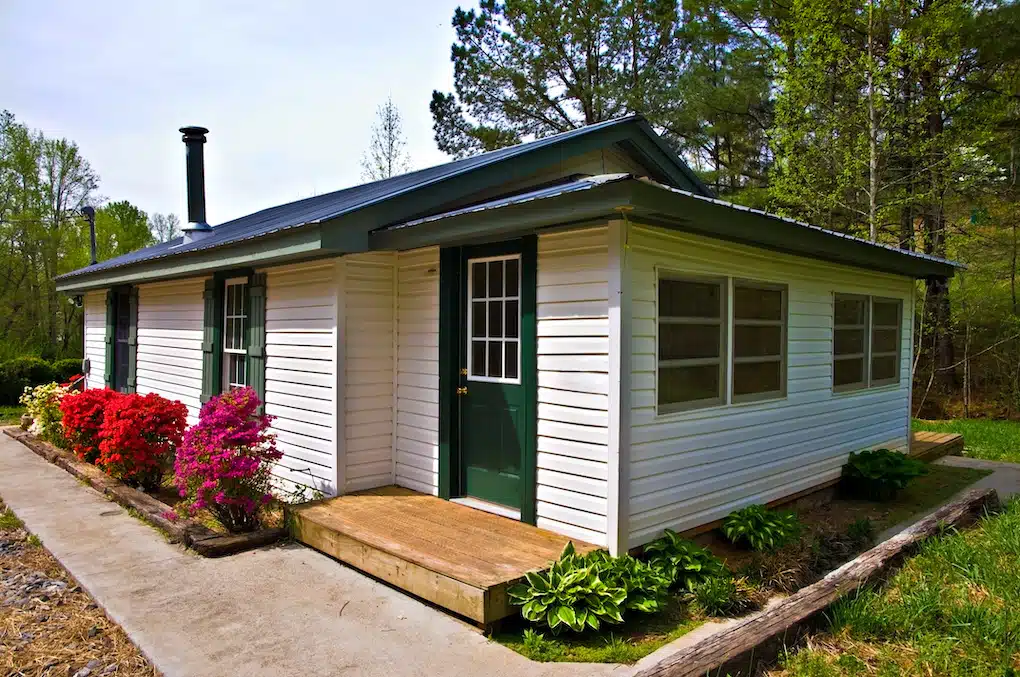With so many siding options available, making the best choice for your home can feel overwhelming. Whether you’re building from scratch or making simple improvements, you’ll need to decide between different materials, colors, and protection grades.
This homeowners guide will break down the 8 best Siding Options available on the market in 2023. Re-siding a house is no small feat, and it’s vital that your choice in siding holds up over time.
The Function Your Siding Provides
Before we dive into all the types of siding out there, let’s talk about why you should invest time in finding the perfect material for your home.
There’s actually a lot more to siding than the way it makes your house look. While adding color and style to the siding can enhance the appeal of your home, there is also a structural element to the siding as well.
The siding on your house provides the first layer of defense against moisture, mold, and ultimately rot. Good siding will—for its expected lifetime—keep moisture away from your house and provide you with protection against environmental conditions. If your siding is unable to keep moisture out, there are other barriers such as the home wrap that is attached to exterior walls before the siding goes on. In worst-case scenarios, faulty siding can cause some extensive and ultimately expensive problems.

Choosing The Right Siding
To ensure a captivating look while maintaining its functional properties for your home, it’s critical that you choose the right siding. Many home builders will have recommended brands and materials that they regularly use for the homes they repair, replace, or install siding on.
Contractors, builders, and companies won’t always take the time to go into detail with you about the different benefits of the siding you choose. We’re here to shed light on the benefits and help you make an informed decision on your purchase.
It’s good to note that different sidings have different moisture resistance rates. Some materials will perform better in different climates than others. For instance, coastal homeowners might need to worry about rust, whereas homeowners in the north need to worry about extreme cold. Most builders and siding companies are going to know which sidings are best for your climate.
*Prices within this article may vary based on location and time of year. All averages are based on 1,500-square-foot home*
8 Best Siding Options For Your Home
1. Brick Siding

A brick exterior is a slightly different material when it comes to siding. Traditionally, brick isn’t something you would ever add to your house after it is built. But today, it can be cost-effective to add brick if you like the way it looks. Additionally, brick can ensure a longer lifespan than most materials and can prove to be advantageous in many ways.
Cost: Brick Siding can be very expensive to install as it is quite labor-intensive. The cost to brick a house could be up to $28 or more per square foot.
Lifespan: One of the big advantages of spending more on brick siding is that it lasts a long time up to 100 years or more.
2. Engineered Wood
Engineered wood is a traditional wood alternative. It’s made up of mostly wood with some additives to help make the finished product better. The additives make engineered wood fire-resistant, water-resistant, and safe from insects (a problem many people can have with wood siding). Additionally, engineered wood typically comes with an extended warranty. The only downside to this type of siding is that, unlike wood, it can’t be painted or stained. This means that switching it to another color can be a hassle.
Cost: Engineered wood will, on average, cost around $5 – $10 per square foot. In some areas, you’ll find it to be slightly cheaper than wood, and in other areas, it is more expensive.
Lifespan: The lifespan of this well-treated siding reaches around 20-30 years and comes with a good warranty in most cases.
3. Fiber-Cement Siding
Another product that was created to imitate real wood is fiber-cement siding. This siding is a great option if you’re going for the look and feel of wood as it’s cheaper and offers many design variations. It can also be made to imitate brick and other materials.
Cost: Because this product is heavy, it tends to be more expensive to install and transport. Expect to pay $15 or more per square foot.
Lifespan: When properly installed, such siding is known to last up to 100 years or more.
4. Metal Siding

Metal siding is typically used in factories and industrial buildings. Although, it isn’t commonly used on houses, still, it can be a great option if you’re looking to have a modern and industrial look. This siding is more weather resistant and durable than most. It is also fire-resistant.
Cost: Depending on the type of metal purchased. You can expect to pay anywhere from $6 to $12 for materials such as aluminum or steel.
Lifespan: If you choose to use aluminum or steel, you can expect around a 50-year lifespan. Materials such as copper or zinc can last up to a century but are much more expensive. Note that steel has to be recoated at least once during its life.
5. Stone Siding
Both natural and man-made stone adds an upscale look to any home and can be a great addition to your property. Natural stones can provide various unique patterns that ensure a customized exterior look. It’s also resistant to most weather and water. The downside to stone is that it is extremely expensive. Natural stone can cost a premium and fabricated stone still goes for a pretty penny. This is mostly because of the intense labor and experience required to provide this novelty.
Cost: Stone, by far, is the most expensive product on the market. Consumers can expect to pay anywhere from $40 to $50 per square foot, with total project costs reaching six figures.
Lifespan: Natural stone will last up to 100 years or more when properly maintained and repaired. Manufactured stones and other imitations often carry warranties that will guarantee them anywhere from 25 to 75 years.
6. Stucco Siding
Inspired by traditional Spanish practices, stucco siding is most common on the west coast or in southern regions influenced by Spanish home design. This technique mixes different products to create a layer that goes over the exterior of the house like cement. It’s great for weather resistance, as it is often naturally colored when applied and won’t chip or decolor easily. Stucco can also be a time-consuming material to install.
Cost: The cost of stucco is average, with most of the cost coming from labor.
Lifespan: Most stucco products will carry around a 20-year warranty but can last up to 50 years or more.
7. Vinyl Siding
Vinyl is a newer material comprised of plastic that has replaced traditional aluminum siding. It is durable, easy to maintain, and cost-effective. This type of siding is common in many homes today. Vinyl is made in many different colors and textures, giving you plenty of options. The downside is that most vinyl sidings are not durable.
Cost: Vinyl is most often the least-expensive option for siding, and installation can typically be done quickly. In the right conditions, this can be one of the most cost-effective options.
Lifespan: Most often, the lifespan of vinyl is between 20 to 40 years. Two factors determine the longevity of the lifespan: how much sun your home will receive and how bad the weather is throughout the life of your siding.
8. Wood Siding

Like vinyl siding, wood siding is versatile in its appearance and can be painted or stained multiple times throughout its life. Wood is easy to install but does require some maintenance every 2 to 5 years. The main reason that wood is popular as a siding is because of its timeless and classy look.
Cost: The cost runs anywhere from $8 to $15 per square foot installed.
Lifespan: On average, you can expect wood to last around 20 years. When properly maintained, wood siding can last up to 40 years or more.
Finding The Right Contractor
If you’re a homeowner in Northern Virginia looking to replace or repair your siding, then consider working with WISA. Our simple and straightforward process gives you an excellent quality product and provides you with peace of mind.
We want you to find the right fit for your project and offer The WISA Pledge as a guarantee and proof that we stand behind our work. Reach out to us today for a quote or inspection!